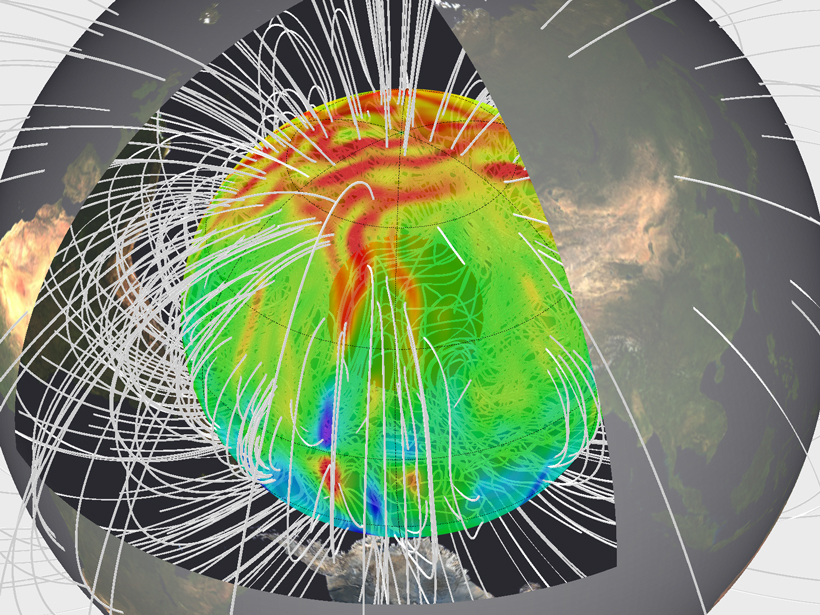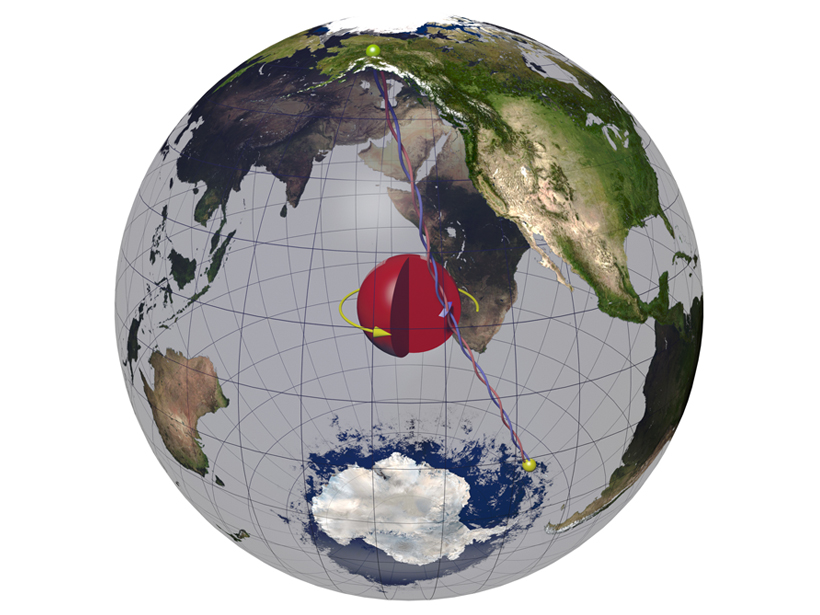A new study uses identical tests to evaluate the accuracy and performance of current models of Earth's magnetic field, then extrapolates the results to anticipated "petascale" supercomputers.
Earth’s core
Posted inResearch Spotlights
Can Meteorite Impacts Disturb a Planet's Magnetic Field?
Such disturbances probably do not occur on our own planet, but evidence for them might still exist elsewhere in the solar system.
Posted inResearch Spotlights
The Enigmatic Core Properties of the Inner Earth
A new study explores the possibility of cubic iron alloy structure at our planet's core.
Posted inResearch Spotlights
From Magnetic Field Data, the Flow of Earth’s Core
How can researchers understand what happens at the center of the Earth when it can’t be measured directly?



